Before I update the travel blog, I’d like to start by mentioning that today, June 27th, marks the 14th anniversary of the day I married my best friend, traveling companion, and love of my life. This trip has been another incredible adventure, and I can think of no one I would rather share it with than my beautiful wife. She does all the planning for these trips, and I am always amazed at how all of the plans she makes for us turn out to be one remarkable experience after another. For this and everything she adds to my life (which would fill volumes), I am truly grateful.

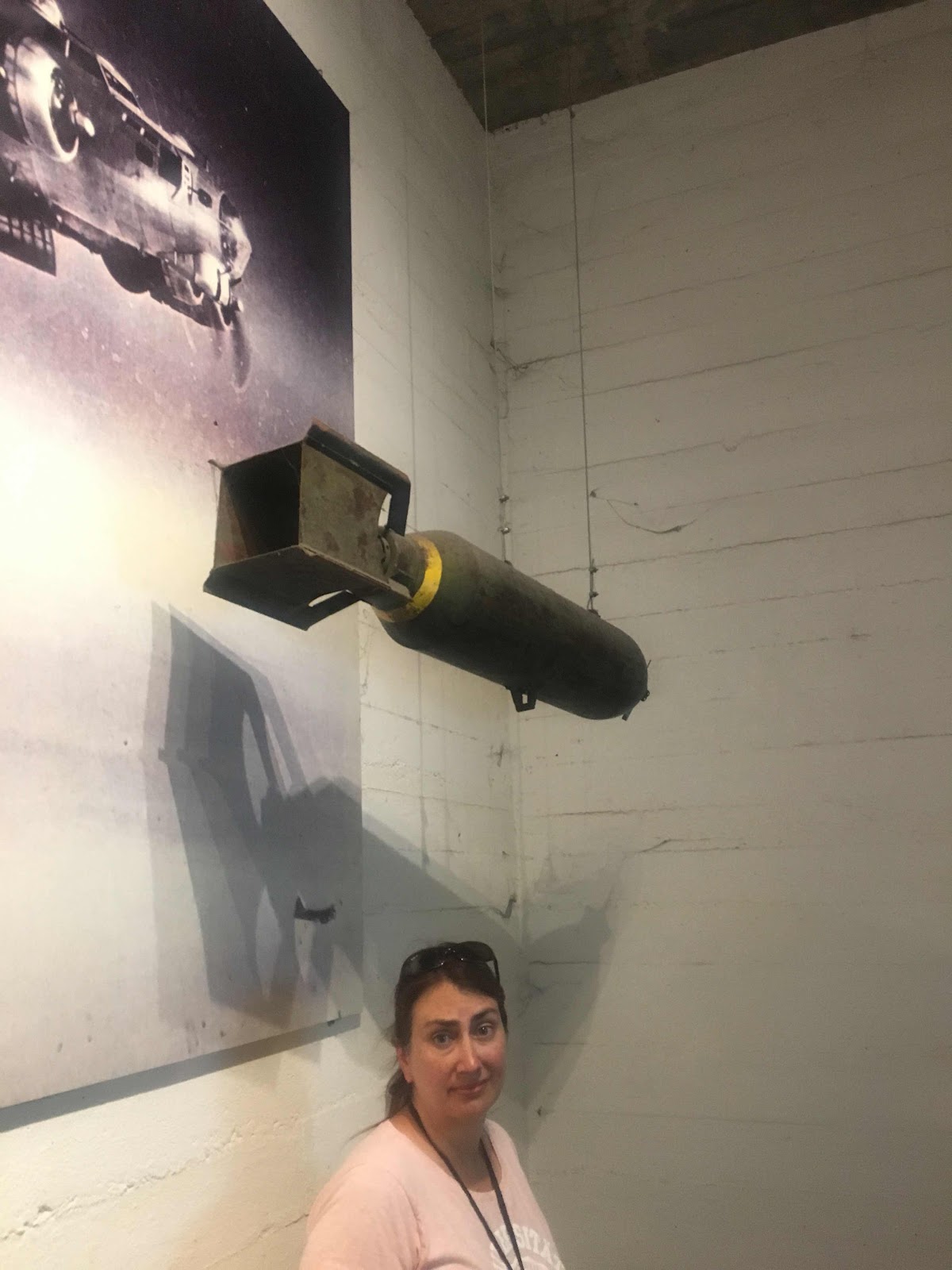





The city was also home to one of the great artists of the Northern Renaissance, Albrecht Dürer. His house is one of the few that survived the war and is worth a visit as it provides some remarkable insights into the genius that called Nuremberg home for most of his life. On a side note, I recommend the Nuremberg Card for access to the sights and transit systems.


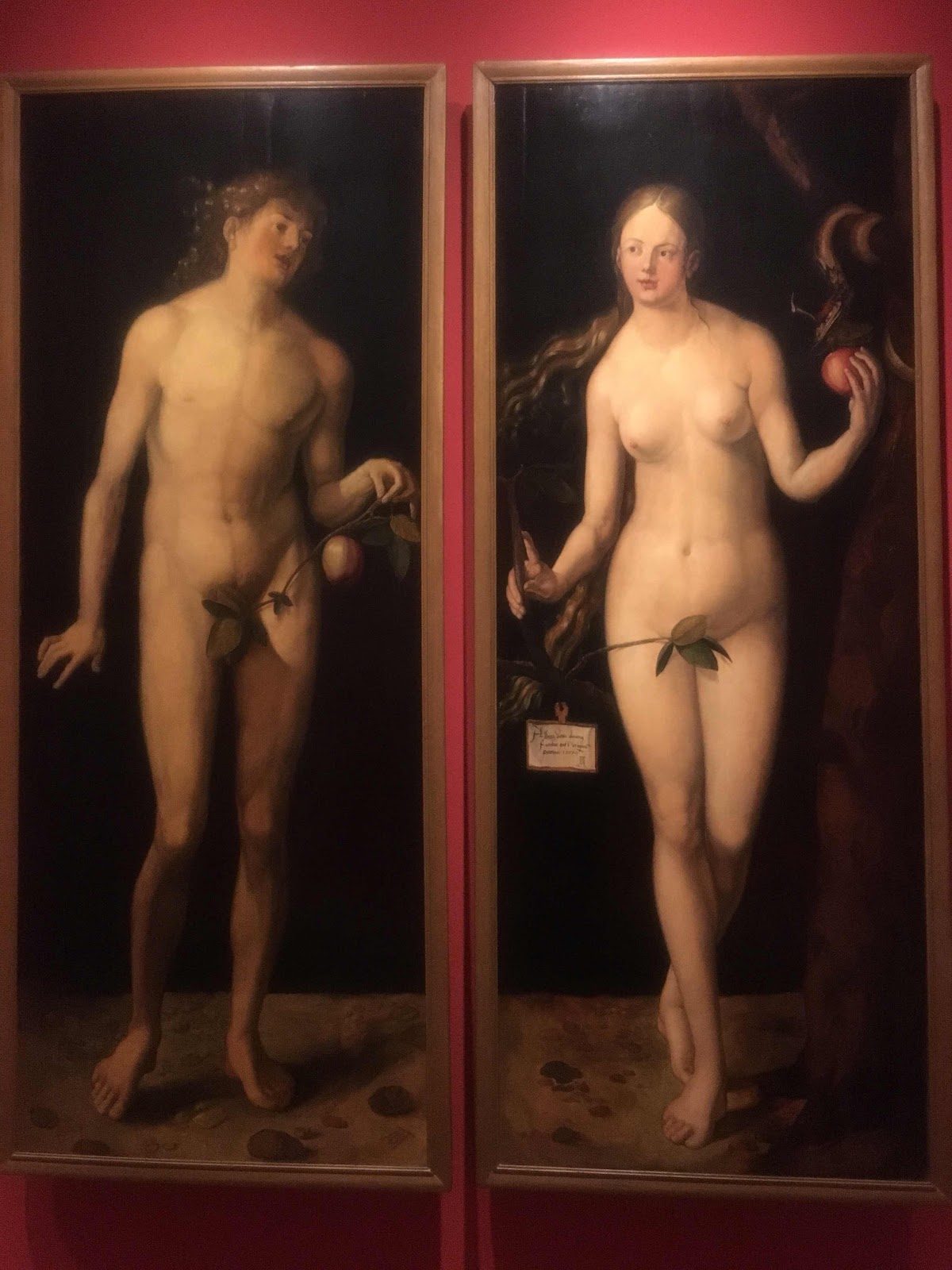



As a result of Albrecht Dürer’s legacy, Nuremberg has become another city devoted to artistic development. It displays art from both old and new artists around the city. It’s worth the time to wander and just examine some of this pieces as you see them. If one piece strikes you, you could do some research about it as there is no information about any of them near the piece themselves. I did this for the last sculpture pictured below, and I will go into what I learned after the pictures. Enjoy!






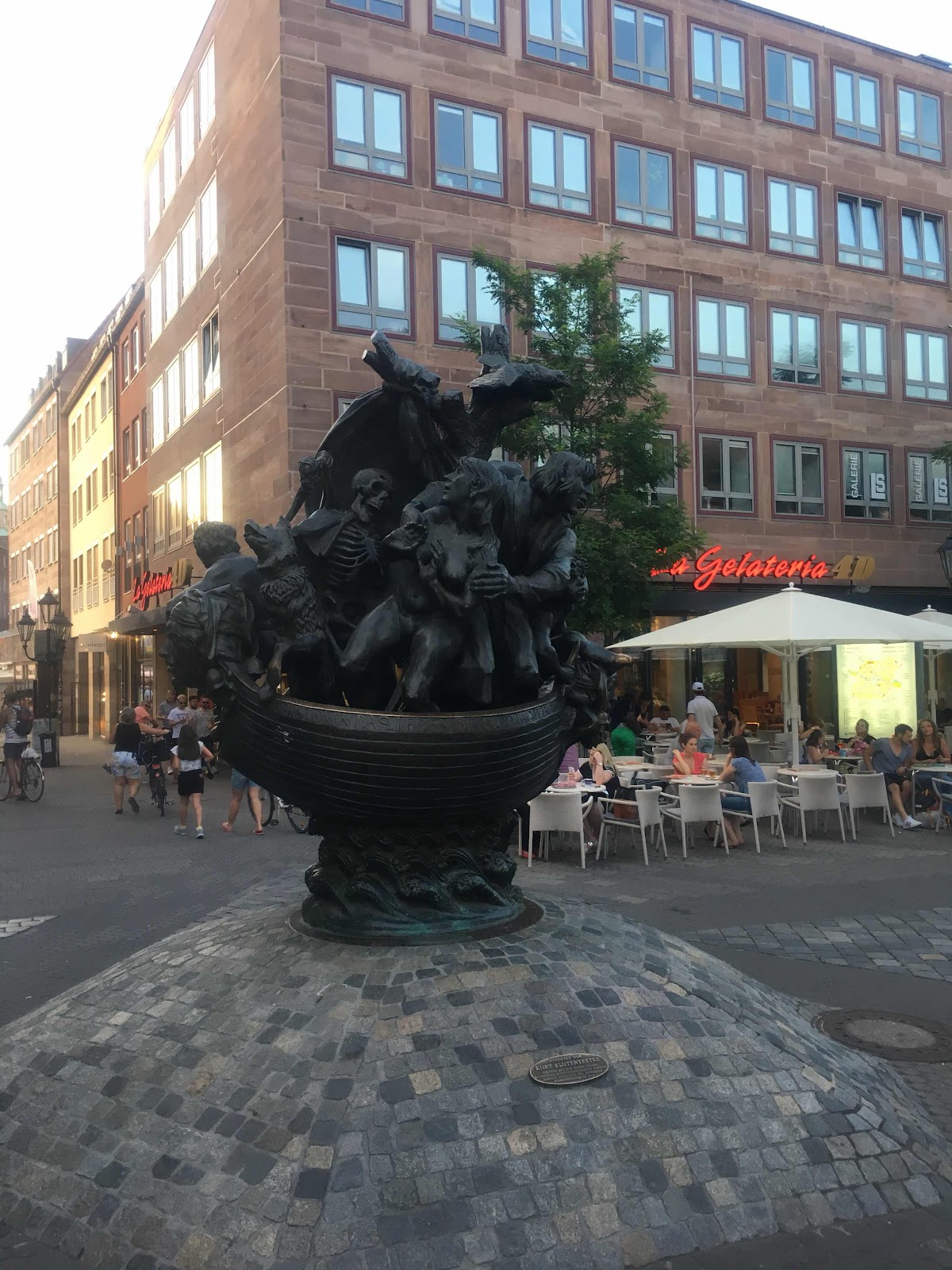
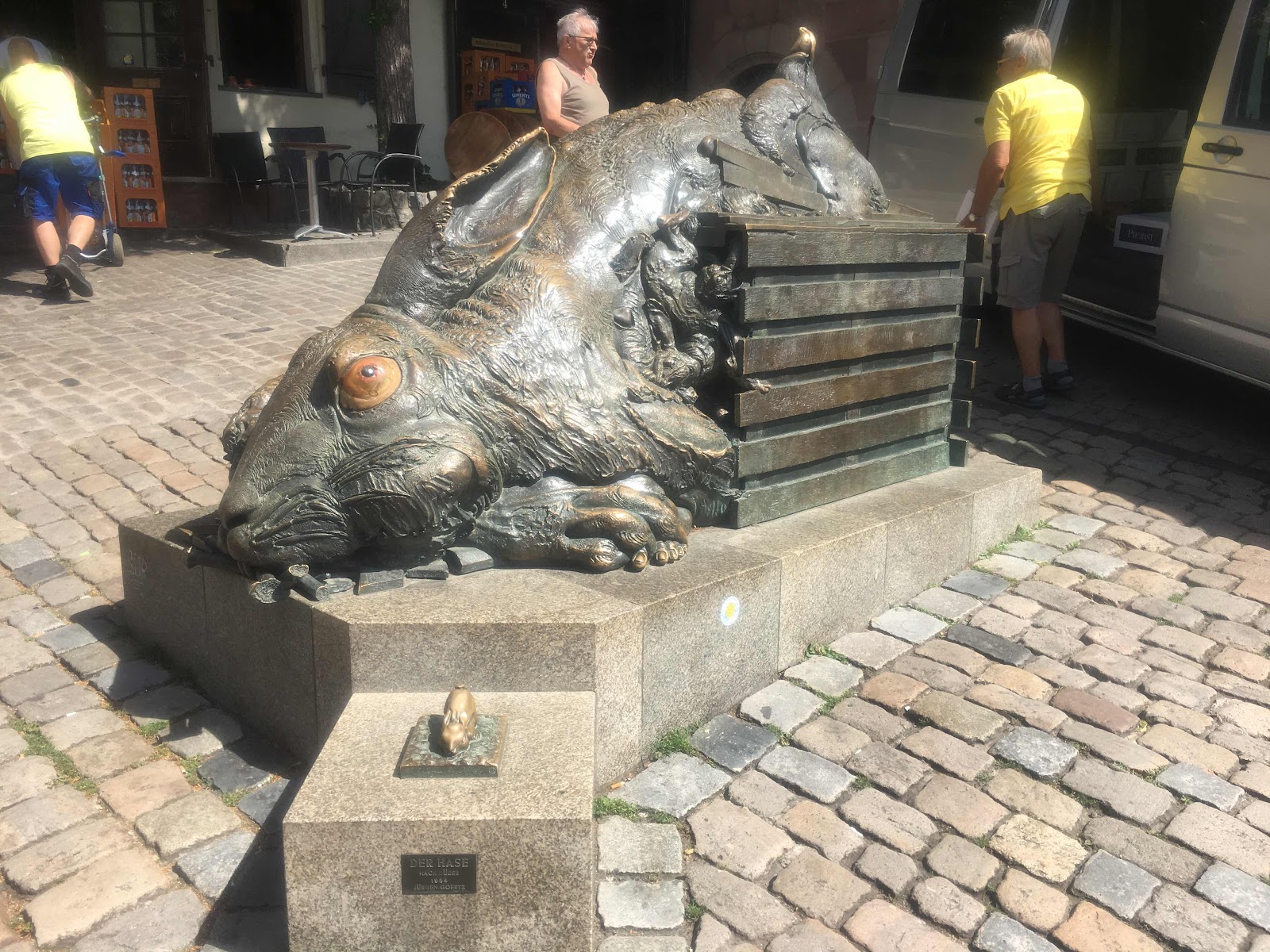
The above sculpture, by Jürgen Goertz called Der Hase (“The Hare”) is of a large rabbit that has crushed a person. If you look carefully, there’s a human foot underneath the rabbit. There’s also a smaller rabbit in front. It was added to this square in 2008 and the locals hangout all around it in the evening because The Wanderer, a popular local pub, is next to the sculpture but has limited seating, so people gather around the statue instead. The artwork is interesting enough to see, but one possible interpretation that I found compelling is connected to Albrecht Dürer, Nuremberg's most famous artist. Dürer painted a famous painting of a rabbit - shown below...

This interpretation of the sculpture implies that the overuse and commercialization of this image has “crushed” Albrecht Dürer’s real legacy as an exceptional artist. I found this particular art piece compelling, disturbing, and fascinating all at once.





To escape the record-breaking heat that Nuremberg and much of Europe has been experiencing, we also explored two different cellars that were used to store beer during the Middle Ages, but during World War II, were used for much different purposes.
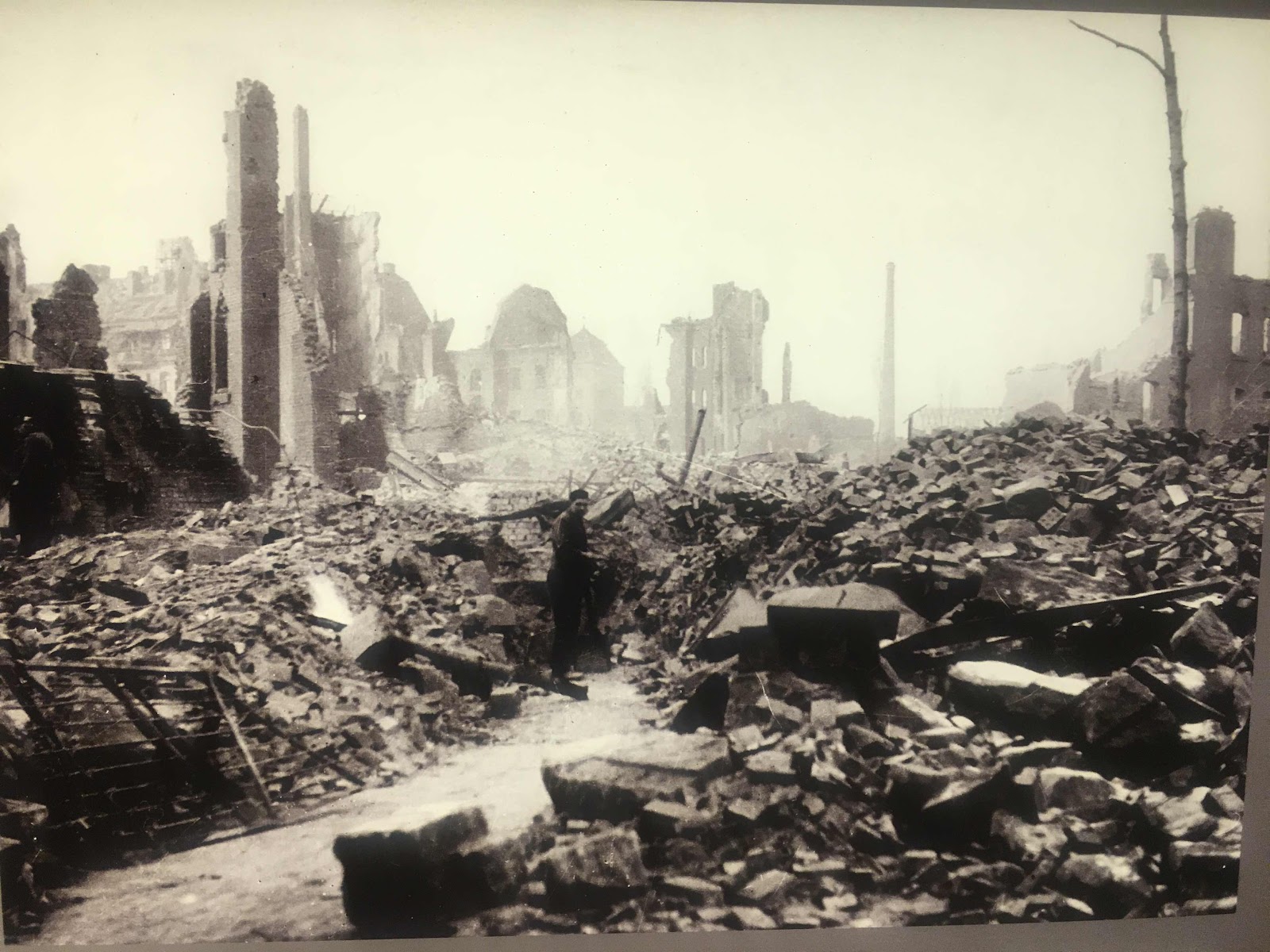









The second tour, The Art Bunker Tour, is only offered at select times, so check the schedule before going. Jenny and I both found this tour to be interesting and informative, so if your schedule permits, it’s worth squeezing in, especially on a hot day.




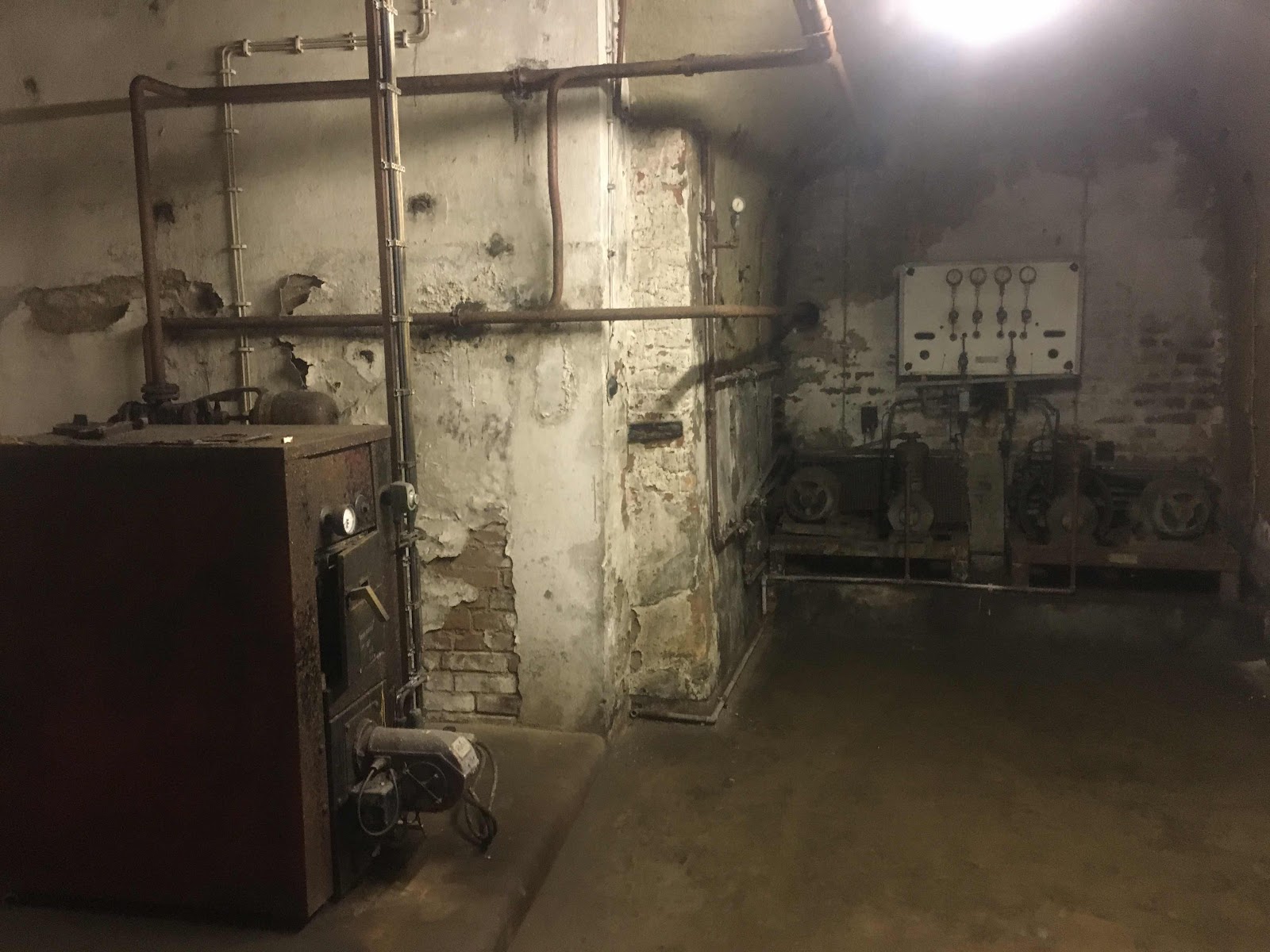

This concludes our month long adventure in Europe. We fly back tomorrow. We hope our adventures inspire you to go out and have some of your own. Bye for now!

Now, on to the update, we’ve spent the last three days in Nuremberg, and I have to say even though we were both a little sad to leave Prague, this city helped lift our spirits and is another place that I would gladly visit again. The central part of the city is an awesome combination of old and new which is remarkable because much of the city was devastated during World War II.
The horrible effects of the war aside, Nuremberg stands as a tribute to the resilience of humankind. The residents had to clear a mountain of rubble and rebuild almost from scratch. The old buildings that survived were mimicked and incorporated into the new plans as seamlessly as possible. It is another great place to simply wander and see what you see. It’s also not as crowded as some of the other destinations we’ve visited on this trip. Having said that, the locals seem to spend as much time in the historic part of the city as the tourists which makes for a lively atmosphere.
The city was also home to one of the great artists of the Northern Renaissance, Albrecht Dürer. His house is one of the few that survived the war and is worth a visit as it provides some remarkable insights into the genius that called Nuremberg home for most of his life. On a side note, I recommend the Nuremberg Card for access to the sights and transit systems.
As a result of Albrecht Dürer’s legacy, Nuremberg has become another city devoted to artistic development. It displays art from both old and new artists around the city. It’s worth the time to wander and just examine some of this pieces as you see them. If one piece strikes you, you could do some research about it as there is no information about any of them near the piece themselves. I did this for the last sculpture pictured below, and I will go into what I learned after the pictures. Enjoy!
The above sculpture, by Jürgen Goertz called Der Hase (“The Hare”) is of a large rabbit that has crushed a person. If you look carefully, there’s a human foot underneath the rabbit. There’s also a smaller rabbit in front. It was added to this square in 2008 and the locals hangout all around it in the evening because The Wanderer, a popular local pub, is next to the sculpture but has limited seating, so people gather around the statue instead. The artwork is interesting enough to see, but one possible interpretation that I found compelling is connected to Albrecht Dürer, Nuremberg's most famous artist. Dürer painted a famous painting of a rabbit - shown below...
This interpretation of the sculpture implies that the overuse and commercialization of this image has “crushed” Albrecht Dürer’s real legacy as an exceptional artist. I found this particular art piece compelling, disturbing, and fascinating all at once.
Now, a trip to Nuremberg would not be complete without a mention of the more infamous side of its history - the National Socialist Party, more commonly known as the Nazi Party. The headquarters of the Nazi Party were located in Nuremberg, and the Nazi Documentation Center Museum is located on part of their old rallying grounds a short tram ride from the city center. The Documentation Center is a powerful reminder of the havoc power in the wrong hands can wreak upon the world. The grounds themselves have been turned into public spaces and have fallen into disrepair which is a fitting reminder of the downfall of a terrible regime. The museum presents the factual and horrifying details of what Hitler and his Party were trying to accomplish ending with the famous Nuremberg trials where several high ranking members of the Nazi regime were sentenced to death or prison. The exhibits were terrifying and educational all in one. I recommend a visit to the museum, and while you’re there, you can also walk around the rest of the rallying grounds which are massive in scale. As it was a hot day, we only explored Zeppelinfeld.
To escape the record-breaking heat that Nuremberg and much of Europe has been experiencing, we also explored two different cellars that were used to store beer during the Middle Ages, but during World War II, were used for much different purposes.
The first was used as a bomb shelter and is located under Hausbrauerei Altstadthof. The network of cellars was able to shelter 10% of the population of the city. The second was used to protect some of the more valuable artwork of Nuremberg. Both were cool, literally and figuratively.
A little warning, since the first tour begins and ends at a brewery, it turns into a little bit of a sales pitch at the end to try to convince you to purchase some of their craft beer and alcohol that they brew and still store in the cellars. The tour includes samples. I didn’t partake, but Jenny tried a beer and a beer brandy. She said the beer was good for beer, but she’s still not a beer fan. The brandy was like “jet fuel” - a little strong for her liking.
While we were there, the cellars also happened to contain a temporary art exhibit consisting of seven coffins where a local artist was making several statements about life, death, and life after death.
The second tour, The Art Bunker Tour, is only offered at select times, so check the schedule before going. Jenny and I both found this tour to be interesting and informative, so if your schedule permits, it’s worth squeezing in, especially on a hot day.
This concludes our month long adventure in Europe. We fly back tomorrow. We hope our adventures inspire you to go out and have some of your own. Bye for now!
